Do you have a question about the Carrier GA4S and is the answer not in the manual?
Important safety notes, signal word explanations, and general installation precautions.
Warnings regarding electrical shock and explosion risks during installation and operation.
Guidelines for unit location, sound, tube diameter, bend radius, and avoiding contact.
Instructions for supporting refrigerant tubing, using hanger straps, and protecting piping from environmental factors.
Instructions for unpacking, inspecting equipment, and preparing the installation site.
Requirements for level mounting, rooftop placement, and necessary clearances for operation.
Warning about sharp edges on sheet metal parts and required safety gear.
Critical safety warnings related to refrigerant handling and environmental protection during piping connections.
Caution regarding equipment damage or improper operation related to refrigerant tubing installation.
Recommended liquid and vapor tube diameters based on unit size.
Warning about the fire hazard posed by refrigerant and oil mixture during brazing operations.
Caution regarding hot components after brazing and the need for protective equipment.
Instructions for installing the liquid-line filter drier, including heat sinking during brazing.
Procedure for evacuating the system to 500 microns using the deep vacuum method.
Mandatory requirement to perform a pressure check with nitrogen.
Steps for performing a leak check using a vacuum pump and gauge.
Important check to ensure factory tubing is secure and not rubbing against other components.
Guidance on changing the piston size when the unit is installed as a replacement component.
Procedure for charging units equipped with a TXV using the subcooling method.
Procedure for charging units with indoor pistons using the superheat method.
Table for determining required subcooling temperatures based on liquid pressure and temperature.
Table for superheat charging based on outdoor temperature and evaporator entering air temperature.
Table correlating superheat temperature and suction pressure to required suction-line temperature.
Warning about electrical shock hazard and not supplying power with compressor cover removed.
Instructions for connecting field power wiring to the contactor.
Guidelines for routing and connecting 24-v control wires, including wire gauge recommendations.
Diagrams illustrating typical wiring connections for various unit combinations.
Importance of checking factory and field wiring connections for security and proper routing.
Requirement to supply power to the crankcase heater before starting the unit.
Cautions regarding overcharging, operating in vacuum, and compressor dome temperatures.
Reminder to wear safety gear and handle refrigerant properly.
Information on the 3-phase monitor LED indicator and ensuring correct compressor rotation.
Steps for checking and adjusting system charge based on operating conditions and line set length.
Table indicating required accessories for low-ambient cooling, long line, and sea coast applications.
Warning about using only approved accessories and replacement parts to avoid damage and warranty issues.
List of essential checks before leaving the job site, including wiring, tubing, and valve caps.
Steps for safely repairing the refrigerant circuit, including recovery, purging, and evacuation.
Importance of periodic maintenance for high performance and minimizing equipment failure.
Important safety notes, signal word explanations, and general installation precautions.
Warnings regarding electrical shock and explosion risks during installation and operation.
Guidelines for unit location, sound, tube diameter, bend radius, and avoiding contact.
Instructions for supporting refrigerant tubing, using hanger straps, and protecting piping from environmental factors.
Instructions for unpacking, inspecting equipment, and preparing the installation site.
Requirements for level mounting, rooftop placement, and necessary clearances for operation.
Warning about sharp edges on sheet metal parts and required safety gear.
Critical safety warnings related to refrigerant handling and environmental protection during piping connections.
Caution regarding equipment damage or improper operation related to refrigerant tubing installation.
Recommended liquid and vapor tube diameters based on unit size.
Warning about the fire hazard posed by refrigerant and oil mixture during brazing operations.
Caution regarding hot components after brazing and the need for protective equipment.
Instructions for installing the liquid-line filter drier, including heat sinking during brazing.
Procedure for evacuating the system to 500 microns using the deep vacuum method.
Mandatory requirement to perform a pressure check with nitrogen.
Steps for performing a leak check using a vacuum pump and gauge.
Important check to ensure factory tubing is secure and not rubbing against other components.
Guidance on changing the piston size when the unit is installed as a replacement component.
Procedure for charging units equipped with a TXV using the subcooling method.
Procedure for charging units with indoor pistons using the superheat method.
Table for determining required subcooling temperatures based on liquid pressure and temperature.
Table for superheat charging based on outdoor temperature and evaporator entering air temperature.
Table correlating superheat temperature and suction pressure to required suction-line temperature.
Warning about electrical shock hazard and not supplying power with compressor cover removed.
Instructions for connecting field power wiring to the contactor.
Guidelines for routing and connecting 24-v control wires, including wire gauge recommendations.
Diagrams illustrating typical wiring connections for various unit combinations.
Importance of checking factory and field wiring connections for security and proper routing.
Requirement to supply power to the crankcase heater before starting the unit.
Cautions regarding overcharging, operating in vacuum, and compressor dome temperatures.
Reminder to wear safety gear and handle refrigerant properly.
Information on the 3-phase monitor LED indicator and ensuring correct compressor rotation.
Steps for checking and adjusting system charge based on operating conditions and line set length.
Table indicating required accessories for low-ambient cooling, long line, and sea coast applications.
Warning about using only approved accessories and replacement parts to avoid damage and warranty issues.
List of essential checks before leaving the job site, including wiring, tubing, and valve caps.
Steps for safely repairing the refrigerant circuit, including recovery, purging, and evacuation.
Importance of periodic maintenance for high performance and minimizing equipment failure.
This document provides installation instructions for GA4S and GA5S Split-System Air Conditioners with R-410A Refrigerant. It covers safety considerations, general installation guidelines, piping connections, charging procedures, electrical connections, startup, and maintenance.
The GA4S and GA5S Split-System Air Conditioners are designed to provide cooling for residential applications. These units utilize R-410A refrigerant and are intended for installation in conjunction with an indoor coil (either with a TXV or an indoor piston) to form a complete split-system. The system's primary function is to remove heat from the indoor space and dissipate it outdoors, thereby lowering the indoor air temperature.
| Brand | Carrier |
|---|---|
| Model | GA4S |
| Category | Air Conditioner |
| Language | English |
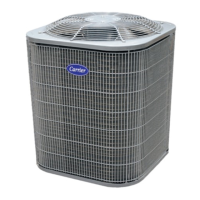
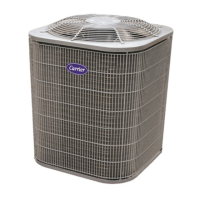
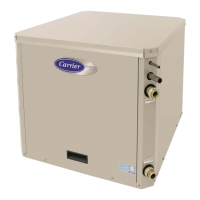
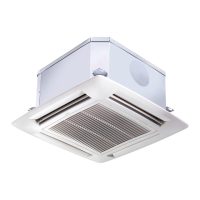
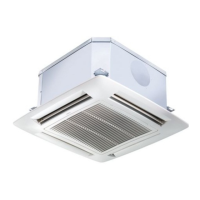
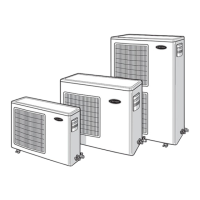

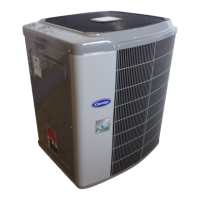
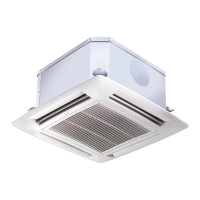
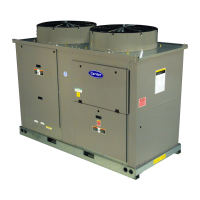
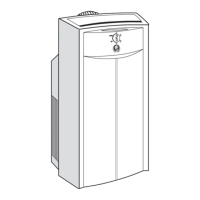
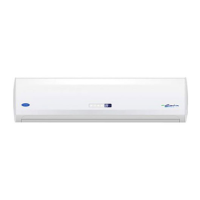
